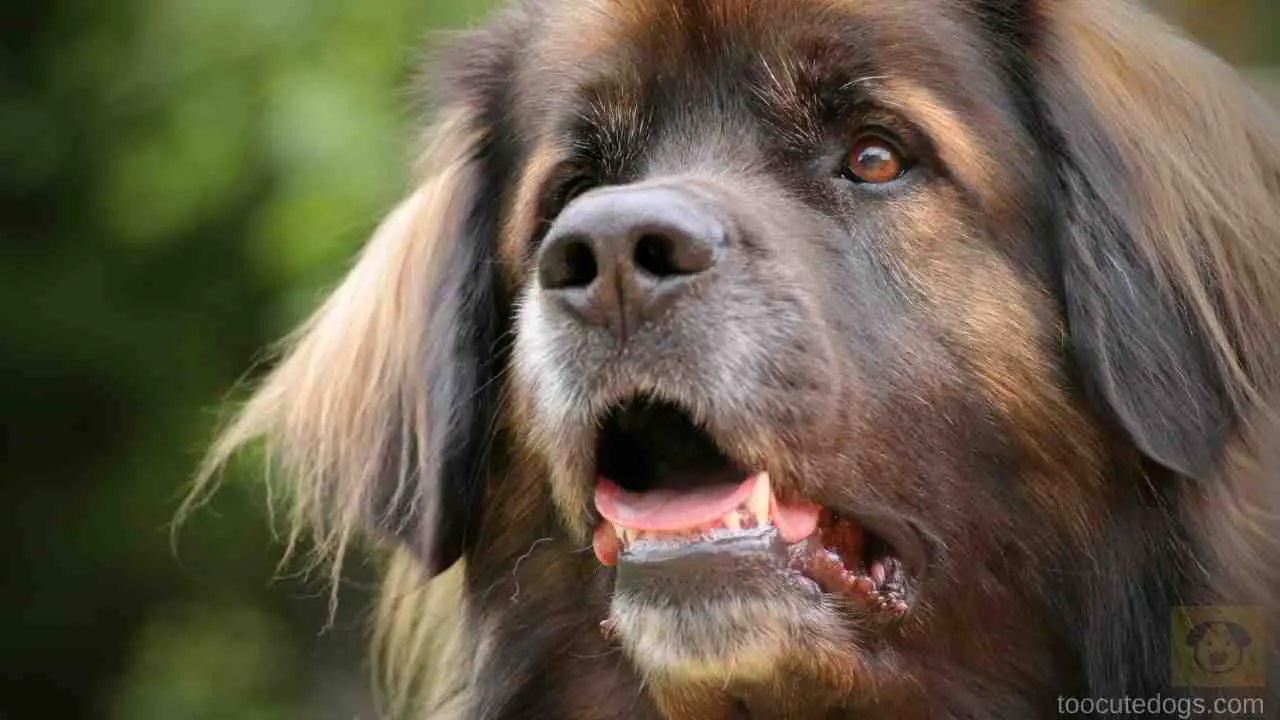Do you want to add a big dog to your family, but you are reluctant because big dogs are believed to drool a lot?
Although drooling is a natural biological characteristic of certain dogs, drool can easily stain your furniture, windows, and clothing. While drool is not an issue for some dog owners, others get dogs without knowing whether their breed is renowned for excessive drooling. Then once they discover that their dogs drool excessively, they tend to abandon their dogs at shelters.
The best way to avoid this predicament is by educating yourself. Hence, I have compiled an extensive list of 8 big dogs that don’t drool excessively so that I can help you choose your ideal big dog.
Table of Contents
Do All Big Dogs Drool?
Yes, all big dogs drool. Different breeds experience drooling in various volumes because drooling is a biological characteristic that big dogs possess. Dogs who have large cheeks and lips, such as Bulldogs, tend to drool the most. If your dog drools excessively, it may be indicative of a health issue.
List Of 8 Big Dogs That Don’t Drool (Much)
1. Borzoi
The Borzoi is a hunting breed whose size is often quite understated. Their weight typically ranges between 75 to 105 pounds. Borzois generally are between 26 to 31 inches in height. Aside from the fact that Borzois do not drool much, they have several other characteristics that attract dog owners.
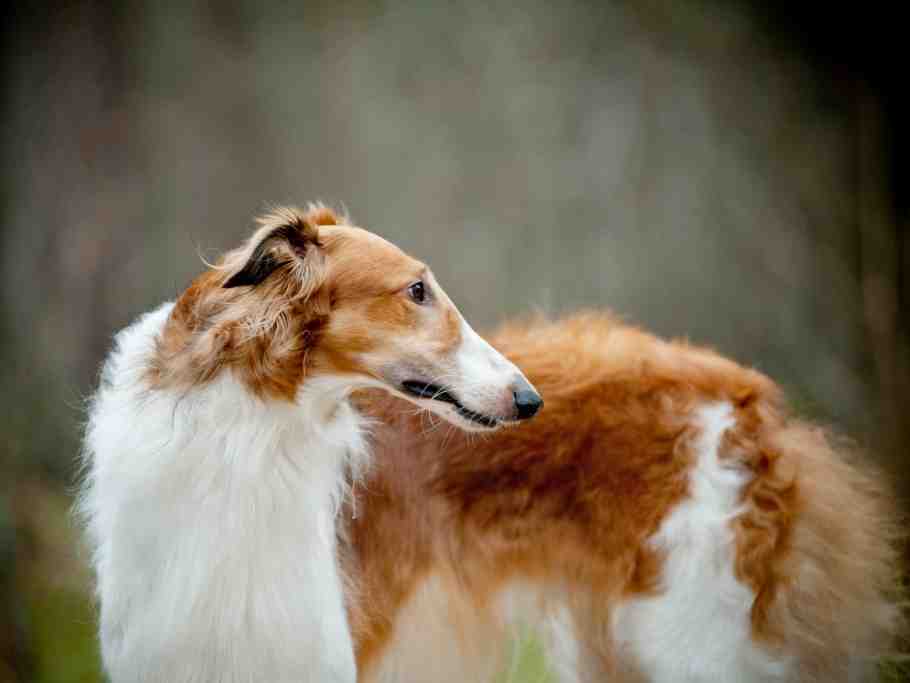
They are calm, reliable, and patient. These temperaments make them the ideal guard and hunting breed. Despite their grace, Borzois are quite the energetic bunch. They require sufficient space to stretch their long legs and release some of their pent-up energy.
As natural-born hunters, Borzois have an intense instinct to prey on another target. They often view smaller animals such as smaller dogs and cats as prey. Therefore, you should keep an eye on your Borzoi when they are around smaller animals.
Despite their hunting instinct, Borzois are friendly with dogs that are as big as they are. They are also not triggered by the presence of strangers.
2. Leonberger
Despite common misconceptions, this German breed does not drool much. Leonbergers originated from a mixture of Great Pyrenees, Newfoundland, and Longhaired Saint Bernard.
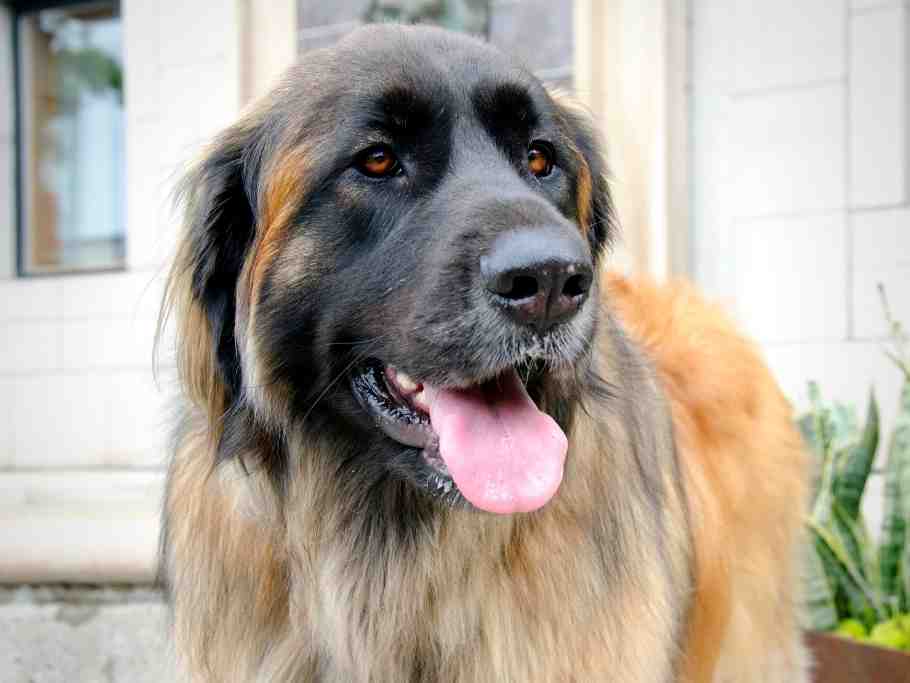
The Leonberger’s distinct mouth shape contributes to their minimal drooling. Unlike many big dogs, Leonbergers have lips closer together, which are a lot less prone to drooling than the large and jowly lips of many big dogs.
Despite their large stature, Leonbergers are pretty graceful. These gentle giants are the ideal family dogs. Many royal families have recognized their potential as family dogs who have made Leonbergers their family dogs.
Leonbergers are friendly towards strangers, other dogs, and children. However, as is the case with most dogs, early socialization is the key to ensuring that your dog does not grow hostile and aggressive towards your family and guests.
3. Doberman Pinscher
As can be observed by their tight lips, Doberman Pinschers do not drool much. If you are an active individual who enjoys several outdoor activities, the Doberman Pinscher would be ideal for you.
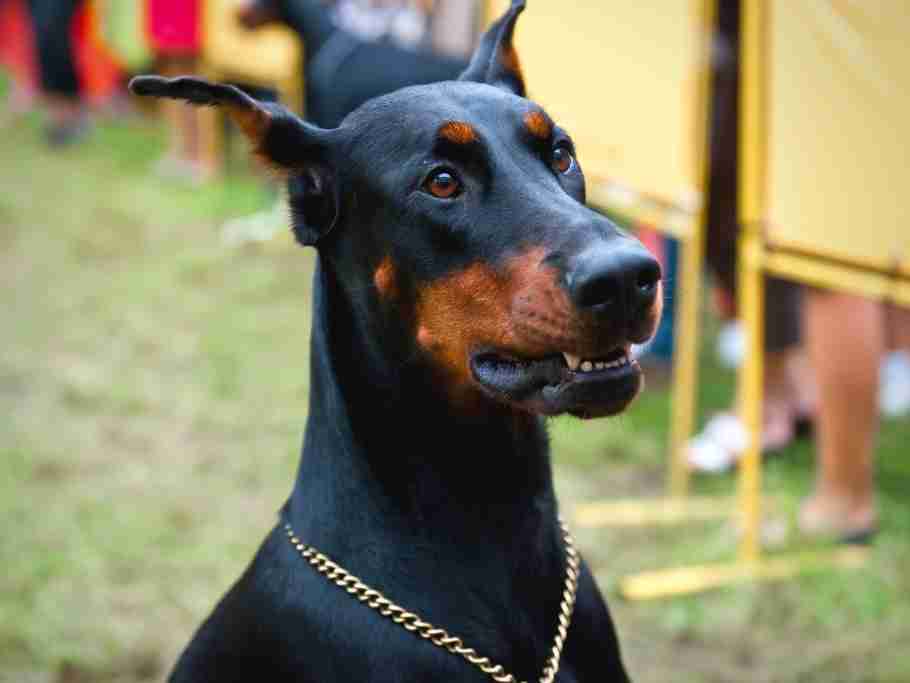
This breed is always keen to go on an adventure, and they are also known for their swift and powerful movement. However, Doberman Pinschers are not the best swimmers. Their muscular frames are not ideal for swimming.
Doberman Pinschers were bred as guard dogs. As guard dogs, they tend to be quite firm and aggressive towards strangers. However, this trait can be dealt with through training. I would suggest exposing your Doberman Pinscher to strangers from a young age and teaching them how to react appropriately when a stranger is present.
A perfectly healthy Doberman Pinscher can live up to 11 years. However, this breed is prone to several serious health issues such as Von Willebrand’s Disease and heart disease. You should take your dog to the veterinarian for regular checkups to ensure early diagnosis.
4. Old English Sheepdog
These massive furballs are incredibly fluffy and surprisingly do not shed much. They also do not drool much. Old English Sheepdogs are not as massive as they look. Their fluffy fur makes them seem much more extensive than they are.
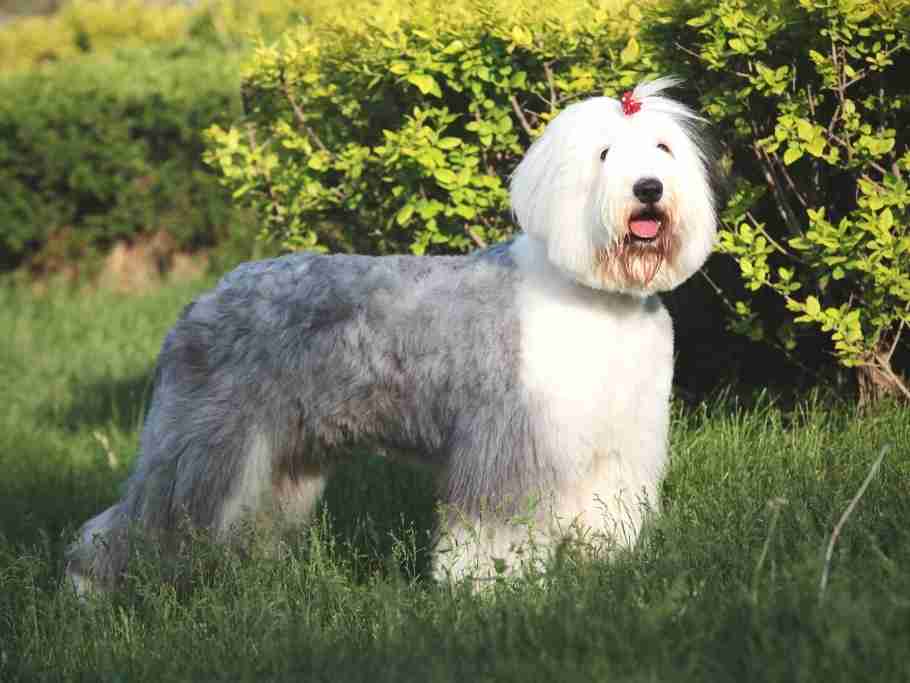
A male Old English Sheepdog is typically 22 inches in height and weighs between 80 to 100 pounds. Females weigh between 60 to 85 pounds and are about 21 inches tall.
As anticipated, these furballs are openly affectionate and love cuddles. The Old English Sheepdog is also intelligent. This means that they are easy to train. They are quick learners who can adapt to various circumstances almost effortlessly.
The Old English Sheepdog’s glorious fur coat does not come without its challenges. Their fur requires quite a bit of attention and regular grooming. You would typically spend at least three hours a week grooming your Old English Sheepdog.
5. Greyhound
Greyhounds are generally between 27 to 30 inches tall, and their weight ranges between 50 to 88 pounds. They do not usually drool, but when they are ill, they tend to drool. Therefore, if you have a Greyhound and they suddenly start to drool, you should take them to your vet because they are ill.
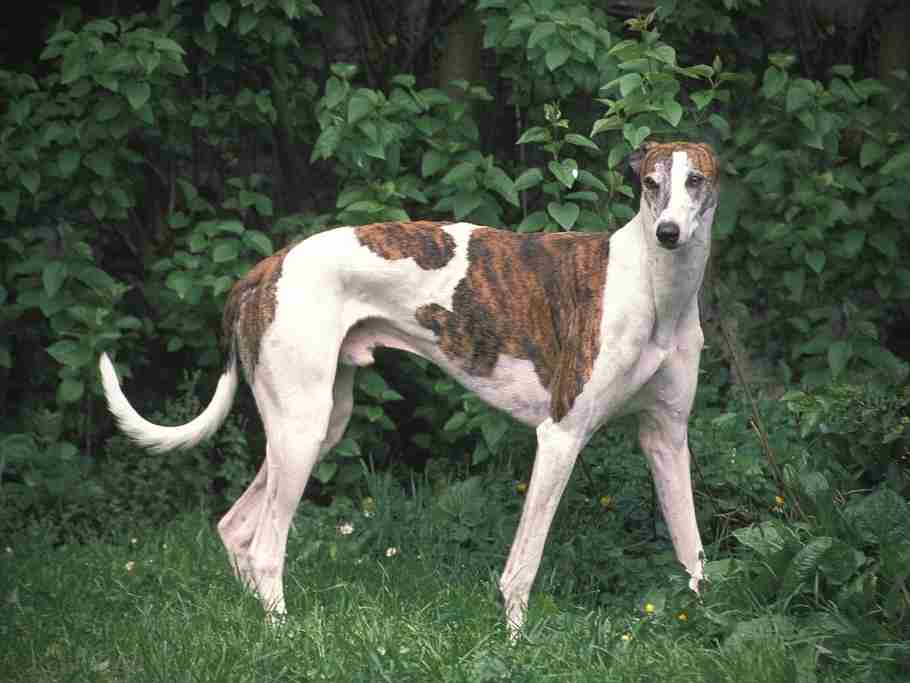
Greyhounds are renowned for their speed and agility. Their sleek and athletic physic allows them to be one of the breeds to look out for in dog races. Since Greyhounds are such athletic dogs, they require a minimum of an hour of physical activity a day.
I suggest taking your greyhound out on walks or trips to the park. This will help stimulate their minds and quench their curiosity and thirst for something other than the walls at home. A swimming trip would also do the trick because Greyhounds are exceptional swimmers.
6. Irish Wolfhound
Irish Wolfhounds are gentle and intelligent. They possess a strong sense of companionship and loyalty. Training an Irish Wolfhound is easy when done correctly. The most effective way to train your Irish Wolfhound is by encouraging them and using other positive reinforcement methods such as treats.
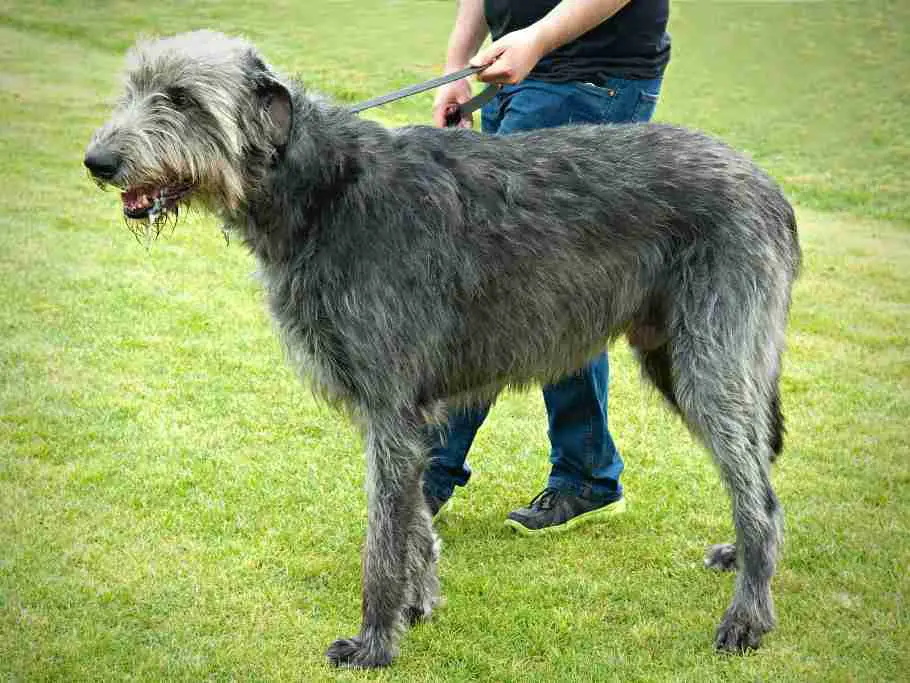
Although Irish Wolfhounds are considered a healthy breed, they are prone to several health issues such asLiver shunt, Hip Dysplasia, and Gastric Dilatation Volvulus.
Several of these health conditions are hereditary, so if their parents had specific health issues, then it is likely that your Irish Wolfhound would also be affected by those health issues. You should request a report about your dog’s parents from their breeder.
In terms of their size, female Irish Wolfhounds are about 32 to 34 inches in height and weigh 115 to 140 pounds. Males stand at 34 to 35 inches tall and weigh between 140 and 180 pounds.
7. Standard Poodle
The Standard Poodle hardly ever drool. If your Standard Poodle drools, it may indicate that they are ill or stressed, or anxious. This breed is an ideal family dog because they are great with children and have the energy levels to keep up with children.
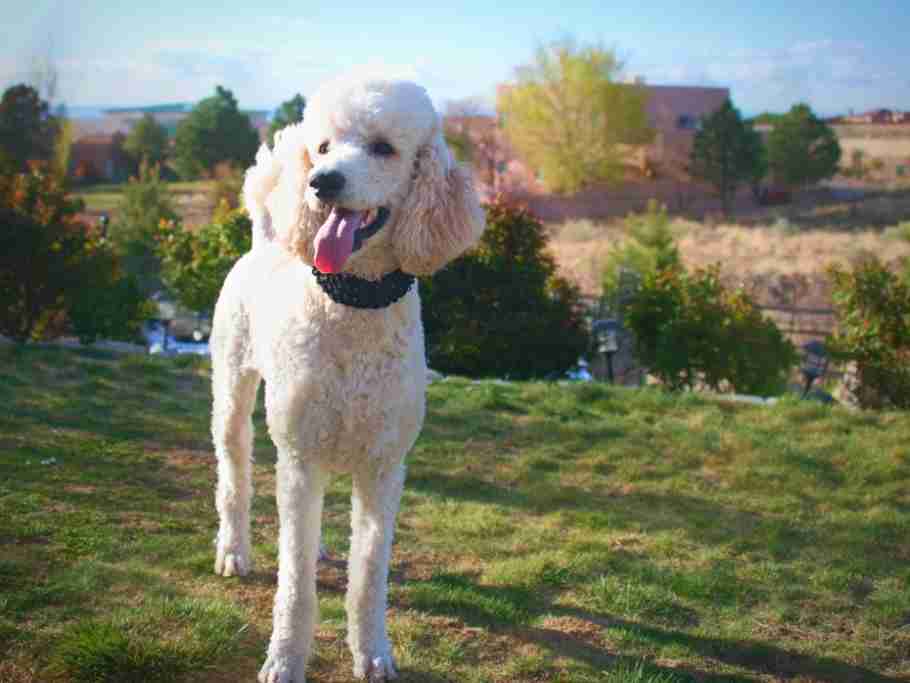
Standard Poodles are a hypoallergenic breed that does not shed frequently. Their fur length can vary between short, long, and medium. Irrespective of the size, Standard Poodles require a significant amount of grooming to maintain the health of their fur coat.
Their fur coat can manifest in several colors, including black, white, gold, and chocolate. Standard Poodles are usually between 18 to 24 inches tall, and they weigh between 50 to 70 pounds.
8. Samoyed
Samoyeds are known for being working dogs. They are large and strong dogs who weigh between 50 to 60 pounds and are between 28 to 35 inches tall.
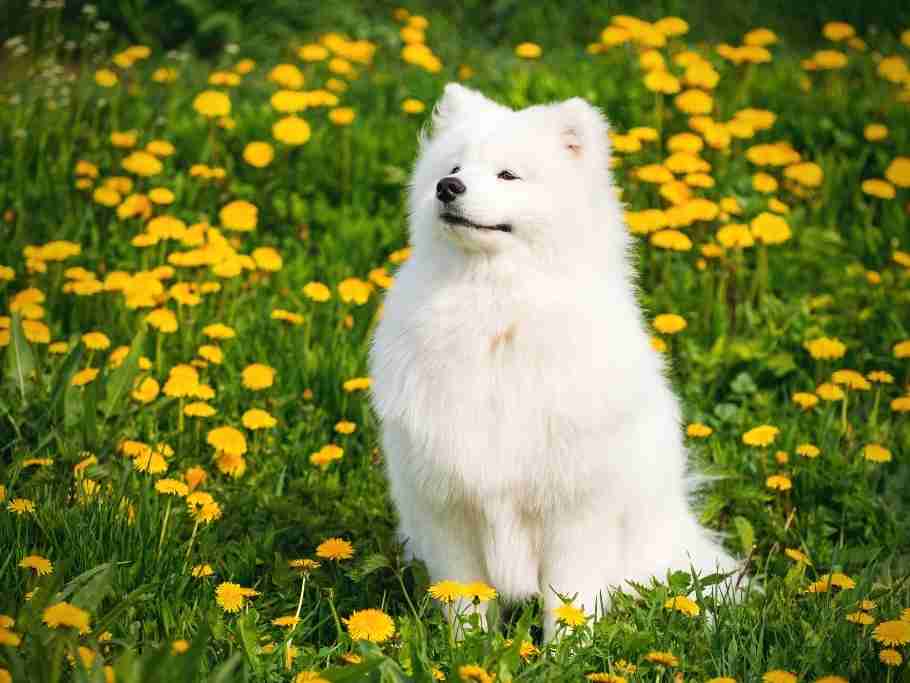
Samoyeds have incredibly fluffy fur coats that require frequent grooming to maintain the fluff. Their fur coat is prone to matting, so you should brush their fur coat at least three times a week and have their fur trimmed only as often as necessary.
These fluffy dogs are quite the loving bunch. They enjoy spending time with their family and are suckers for cuddles. Although Samoyeds can handle being left alone, you should not leave them alone for too long because they tend to be destructive when they are lonely.
FAQ
What Causes Big Dogs To Drool?
Many big dogs drool because of their large and jowly lips. However, if your big dog does not usually drool and suddenly starts drooling, it may be because they may be overheating, stressed, or ill.
Conclusion
Before getting a big dog, you should research whether their breed drools or not. If you are not keen on having a dog who drools, you should consider getting a big dog who does not drool because cleaning dog drool off your clothes and furniture can be pretty time-consuming.

